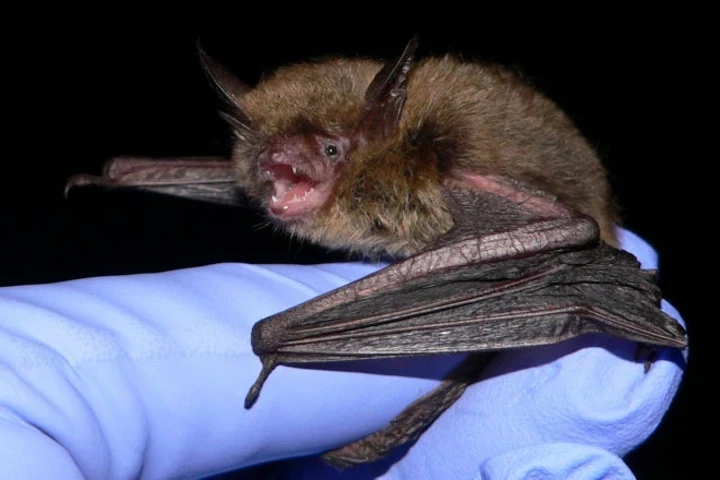The northern long-eared bats in United States are in a vulnerable situation. A report in smithsonianmag.com stated that a fatal disease caused by fungus has killed them in such large numbers that the US Fish and Wildlife Service has declared them as endangered this week.
Called a white-nose syndrome, the root cause of this disease is the fungus named Pseudogymnoascus destructans or Pd. Pd. It affects the skin of the creatures when they are hibernating, resulting in a white fluff which can be seen on their wings, snouts and ears.
In a statement, Martha Williams, Director of USFWS said: “This listing is an alarm bell and a call to action. White-nose syndrome is decimating cave-dwelling bat species like the northern long-eared bat at unprecedented rates.”
The first time this fungus was discovered was in 2006 when the bats were clicked in a cave near Albany, New York, by explorers and the images showed the white noses. From then it has proliferated among 12 species of bats in 38 different States and eight provinces of Canada leading to decimation of millions of these animals in North America.
The disease, experts feel has led to a decline of 97 to 100 per cent of northern long-eared bats with it spreading to 80 per cent of the species’ geographical range. According to USFWS it will affect their entire territory by the end of the decade.
In this disease, the hibernating bats wake up often, making them use up their fat reserves and finally causing starvation. Before getting up from their slumber, the infected bats use energy twice as fast as the healthy ones. Physical contact between the animals causes its spread and it also can infect from the surfaces of the caves. The spores of the disease can spread through clothes and shoes of people too.
As the fungus develops at temperatures much lower than the human body the risk of infection among people is low. Till now the white-nose syndrome has not been documented among human beings.
The USFWS had listed these bats as threatened in 2015. Stressing the importance of these mammals, Dan Ashe, former Director of USFWS said in a statement: “Bats are a critical component of our nation’s ecology and economy, maintaining a fragile insect predator-prey balance; we lose them at our peril. Without bats, insect populations can rise dramatically with the potential for devastating losses for our crop farmers and foresters. The alternative to bats is greater pesticide use, which brings with it another set of ecological concerns.”
Bats provide valuable service to US agriculture economy through pollination and control of pests valued at more than $3 billion. To help their population recover, efforts will be focused on forest areas where they roost in summer. Further, wind companies will also be roped to minimise bat fatalities due to turbine strikes.
From January 30 next year their endangered status will be effective.




















